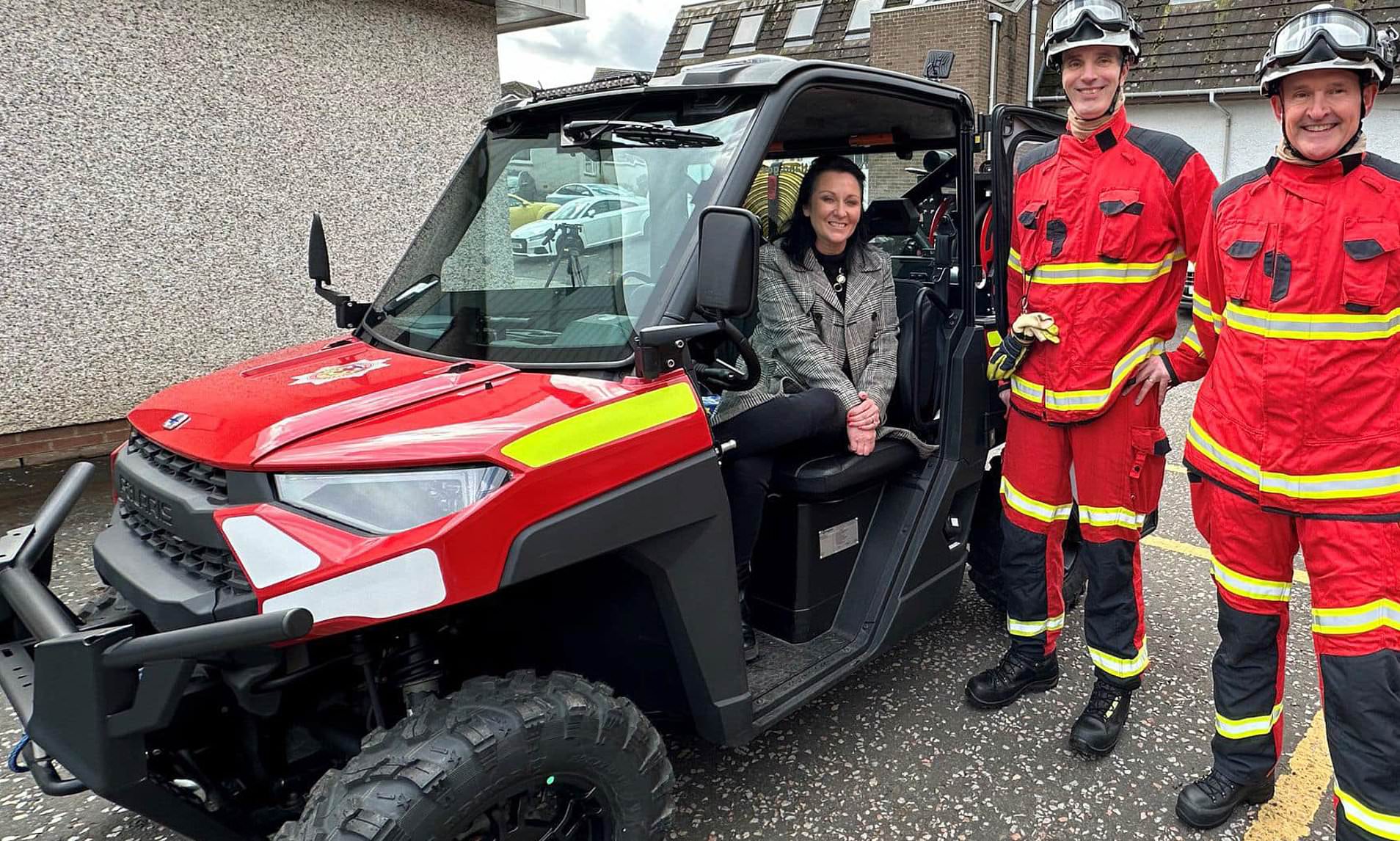
£700,000 VEHICLES FOR FIGHTING WILDFIRES LEFT UNUSED FOR A YEAR
A £700,000 fleet of state-of-the-art vehicles designed to tackle wildfires has been lying unused for a year amid fears the buggies could melt if they get too close to flames.
Ten new all-terrain vehicles (ATVs) were designed to give the Scottish Fire and Rescue Service a world-leading capability at serious rural incidents such as blazes in inaccessible locations.
However, the ATVs remain in storage a year after delivery amid a list of technical issues which also include concerns they could tip over on hilly ground and that the wing mirrors are not clearly visible.
Firefighters are also angry that the ATVs only have space for a crew of two, saying they should be able to transport four or five people to emergency scenes.
The vehicles are languishing at an asset resource centre in Dundee while fire chiefs work out what to do next.
A whistleblower said: ‘The ATVs are absolutely hopeless and not fit for purpose. How this got to this stage is beyond belief.
‘The doors are plastic and could be pierced in the event of a roll-over, as well as being susceptible to heat and flame. The concern is it could melt at the first wildfire it attends.’
The machines were ordered from US-based firm Polaris and delivered, via a contractor who carried out conversion work, in June 2023. It is understood a ‘tilt test’ was completed by an independent company in March, which resulted in the maximum safe angle of operation being determined at just 15 degrees.
Sources said this has resulted in the ATVs being practically unusable on any challenging terrain.
In April, the arrival of the ATVs was trumpeted by Community Safety Minister Siobhian Brown, who posed in one for a photo opportunity, yet they still remain in storage.
The whistleblower added: ‘They only carry two people and an issue with the degree they can safely “tilt” has compounded matters. It’s absolutely farcical.’
Tristan Ashby, chief executive of the Fire and Rescue Services Association, said: ‘The concerns remain that these vehicles could tip over on even slightly hilly terrain, while the plastic panelling is not only vulnerable to heat but could be pierced if a vehicle tips.’
Scottish Fire and Rescue Service Area Commander Michael Humphreys said: ‘Crews will receive training on the new vehicles before they can be made operational.’
A Polaris spokesman said: ‘The vehicles were supplied via a third party within a specification framework laid out by the Scottish Fire and Rescue Service.’
Read more 2024-06-15T22:00:24Z dg43tfdfdgfd